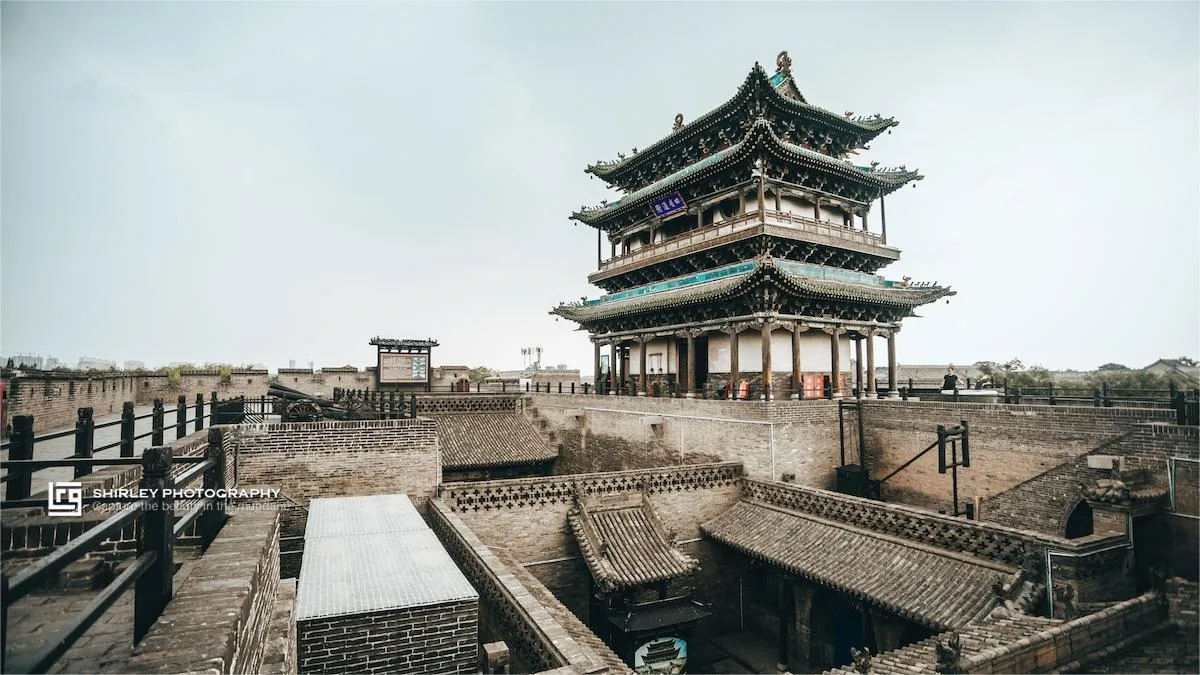The Pingyao City Wall (平遥城墙), originally constructed during the reign of King Xuan of the Western Zhou Dynasty (827-782 BC), was initially made of rammed earth. It was rebuilt during the third year of the Hongwu Emperor’s reign in the Ming Dynasty (1370). The wall stands approximately 12 meters high and averages 5 meters in width. Its core is filled with compacted earth, and the exterior is faced with blue bricks. The top is paved with bricks for drainage. Along the outer wall, there are enemy towers every 5 meters, with a total of 72 watchtowers and 3,000 battlements, symbolizing Confucius’s 3,000 disciples and 72 sages.
The Pingyao City Wall is uniquely designed to resemble a turtle. The southern gate represents the turtle’s head, with two wells outside the gate symbolizing its eyes. The east and west gates curve towards the south gate, mimicking the turtle’s legs moving forward. The northern gate bends eastward, resembling a tail flicking to the side. Each of the six gates originally had a drawbridge and is protected by a 4-meter-deep and 4-meter-wide moat.
At the corners of the wall are corner towers, with additional structures such as the Wenchang Pavilion and Kuixing Tower at the southeast corner, and a commanding platform on the eastern city wall. This city wall embodies both defensive and cultural functions, representing the typical features of northern Chinese cities during the Ming and Qing dynasties.
Table of Contents
- Basic Information
- Location and Transportation
- Highlights of Pingyao City Wall
- Vlog about Pingyao City Wall
- Other Attractions in Pingyao Ancient City
Basic Information
| Estimated Length of Tour | 1 – 2 hours |
| Ticket Price | Included in the ticket for Pingyao Ancient City |
| Opening Hours | 8.00 – 18.00 (1st April – 7th October) 8.00 – 17.30 (8th October – 31st March) |
| Telephone Number | 0086-0354-5609577 0086-0354-5680205 |
Location and Transportation
The Pingyao City Wall is located within the ancient city of Pingyao, at 58 Zhaobi South Street, Pingyao County, Jinzhong City, Shanxi Province. To get there, take bus line 1 in Pingyao and get off at Beimen (North Gate) Station. From there, it’s a short walk to the city wall.
Highlights of Pingyao City Wall
Barbican (瓮城)
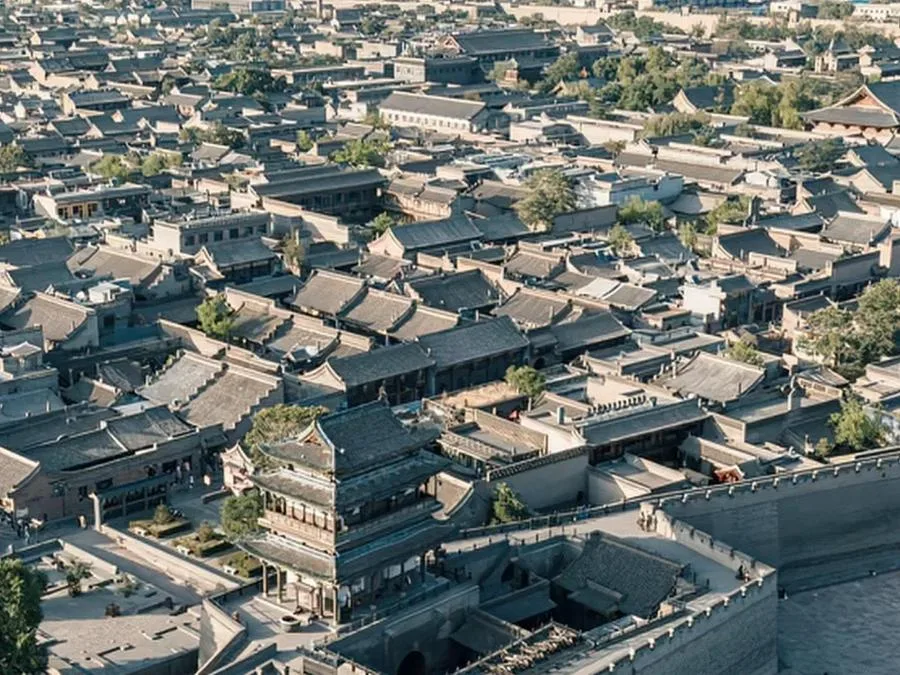
The Barbican, also known as the “moon city,” is a smaller fortification built outside the main city gate to enhance the city’s defense capabilities. According to the “Essential Military Techniques” (Wujing Zongyao), “The barbican outside the city can be either round or square, depending on the terrain, with a height and thickness equal to the city wall, but with a single gate, which can be positioned as needed.” Most of the gates of Pingyao’s barbican are oriented at a 90-degree angle to the main city gates (except for the South Gate and East Lower Gate). Even if the enemy breaches the barbican gate, the main gate remains defensible. The narrow space within the barbican makes it difficult for large-scale attacks, slowing down the enemy’s advance. Meanwhile, defenders atop the city walls can shoot down from all sides, inflicting heavy casualties on the attackers.
Gate Towers and Corner Towers
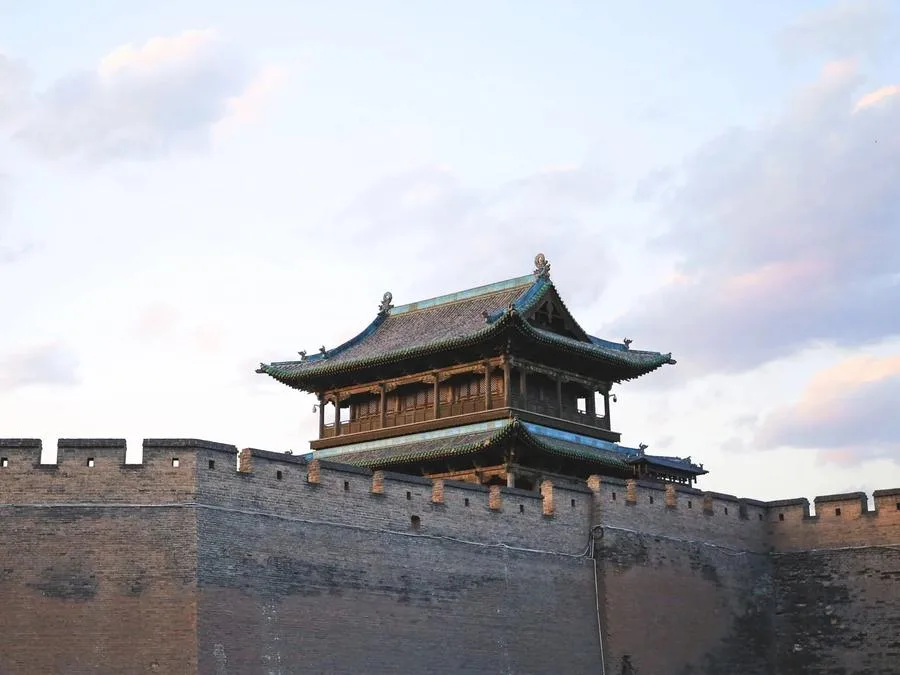
Gate towers, known as “que towers” in ancient times, are built above the city gates. Pingyao’s city wall has six gate towers, originally constructed during the Ming Dynasty and rebuilt in the 42nd year of the Kangxi Emperor’s reign in the Qing Dynasty (1703). These towers stand 16.14 meters high, with five bays in width (13.72 meters) and four bays in depth (10.04 meters). They feature a simple yet elegant design, with sturdy and dignified structures. The gate towers are the most exquisite and visually appealing high-rise structures on the city walls. They provide a vantage point for observation during peacetime and serve as command centers for the main general during wartime, making them crucial high-altitude defense facilities.
Corner towers are built at the four corners of the city walls. They address the defense weak points at the corners, thereby enhancing the overall defensive capability of the city wall.
Marshal Platform (点将台)
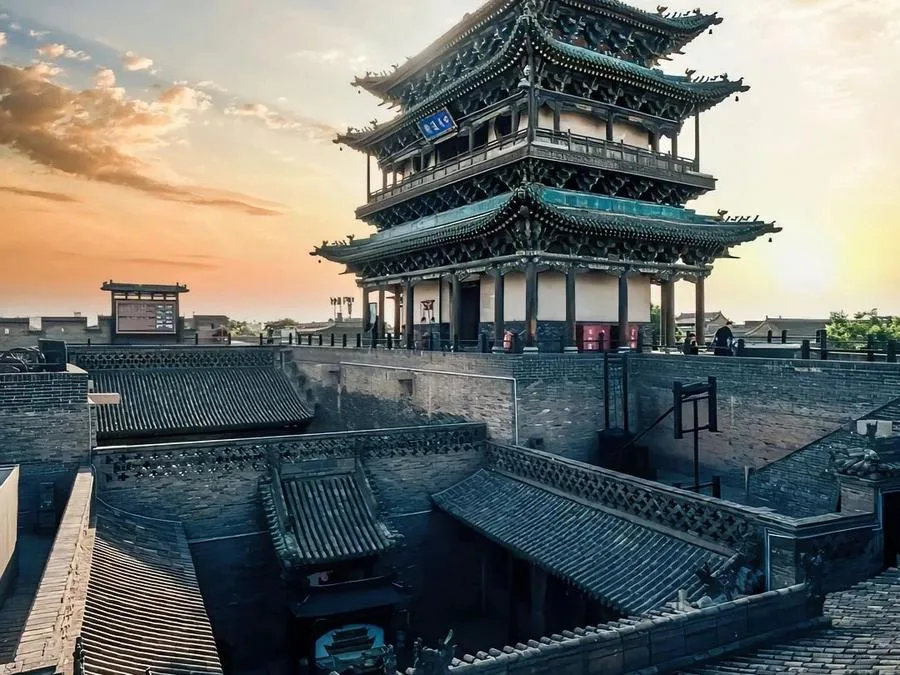
The Marshal Platform is situated atop the city wall between the Upper East Gate and the Lower East Gate. It is now a high platform built of bricks. According to legend, after King Xuan of the Zhou Dynasty ascended the throne in 827 BCE, he dispatched General Yin Jifu to lead a northern expedition against the Xianyun tribe. After a series of victories, Yin Jifu was ordered to station troops in what is now Pingyao, where he reinforced the city walls and trained soldiers. In the mid-Ming Dynasty, to commemorate General Yin Jifu’s achievements, a Gaozhen Temple was constructed at the site where he once reviewed troops and conducted military exercises. During the Ming and Qing periods, when the city walls were being repaired, the Gaozhen Temple was integrated into the wall, forming a spacious high platform atop the wall.
Moat
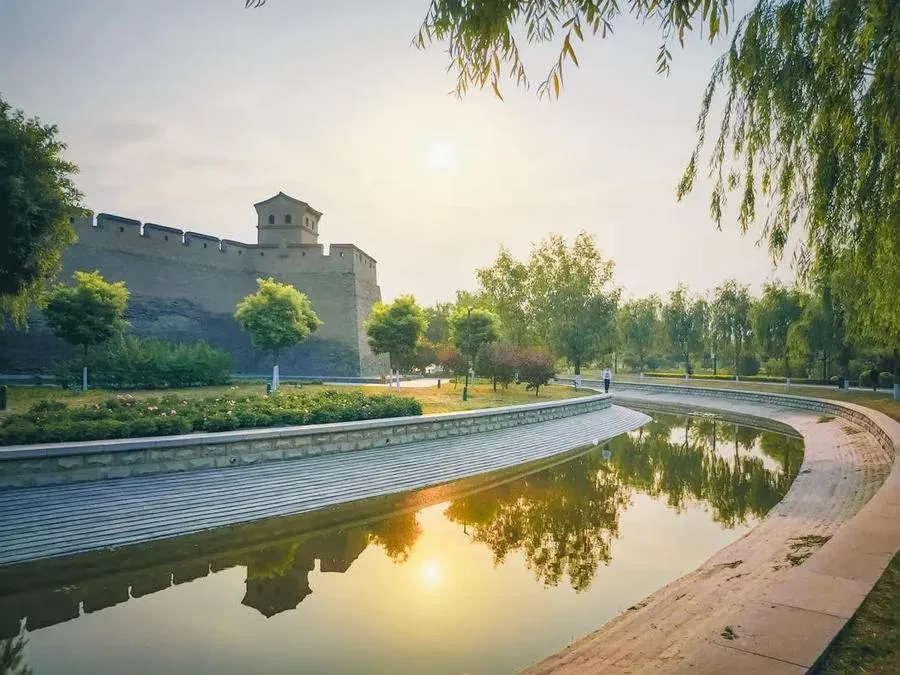
The moat, also known as a defensive ditch, surrounds the city. In ancient times, humans dug trenches around their settlements to defend against invasions. The resulting elevated strips of land inspired the construction of walls. The moat formed as a byproduct of soil excavation for building the city walls. It filled with water, creating a defensive barrier that was difficult to cross. The saying “The city is surrounded by people, the moat surrounds the city” highlights the moat’s role as a protective measure. The moat served as an obstacle for potential invaders, often referred to as the “moat.” Drawbridges spanned the moat, with one end attached to ropes and pulleys, allowing the bridge to be raised or lowered to control access to the city.

